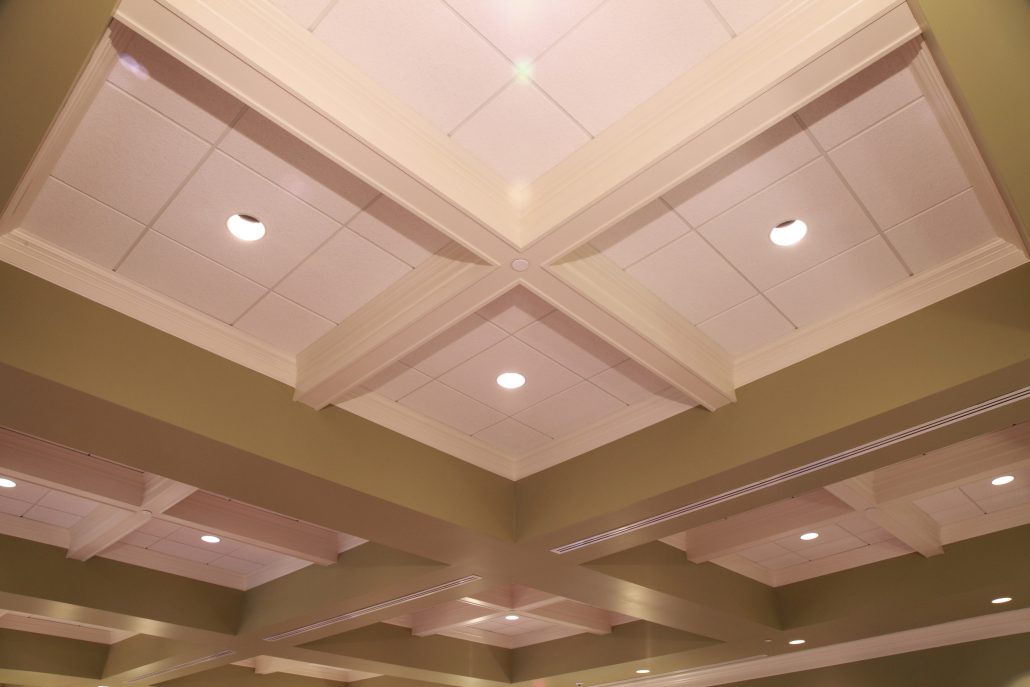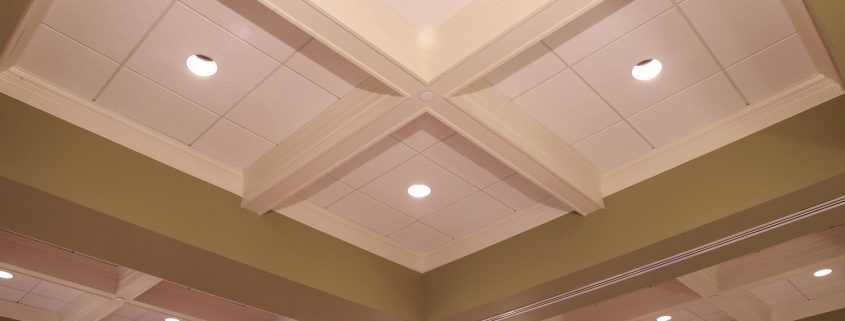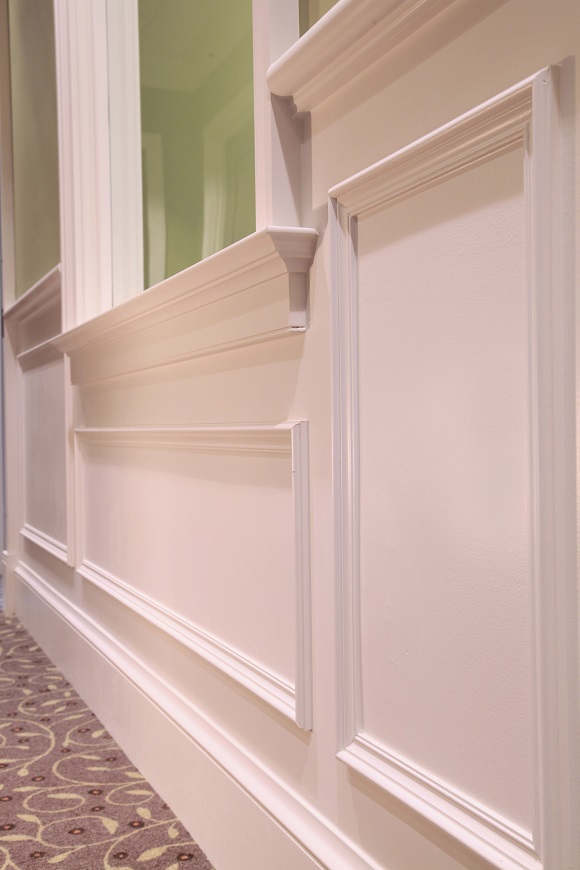Crown Moldings: A Crown for your Classic Home or Business

State Bank of The Lakes – coffered ceiling designed by Bleck & Bleck Architects
Crown moldings add polish and formality to a classic room. Originally designed to hide imperfections at the intersection of walls and ceilings, today’s crown moldings are often chosen for the warmth and sense of drama they create in a classic room.
Ancient Classical Origins
Ancient Greeks and Romans appreciated the versatility of crown moldings; they could be utilized to visually divide large spaces into smaller, more human scaled rooms. Early crown moldings took their designs from the Greek and Roman column orders, such as Doric, Ionic, and Corinthian orders. Rooms finished with a consistent order of columns and crown moldings appeared coordinated and aesthetically pleasing.
We like Brent Hull’s article in This is Carpentry in which he discusses and illustrates the origins of the use of trim. Used together to bring order to a room, baseboards are perceived as the “foot” of the room, while crown moldings are perceived as the “head” of the room. Classical profile shapes, such as the ogee, egg and dart, dentil, ovolo, and cavetto, are commonly used in crown moldings and on formal furniture.
Get a Custom Look with Crown Moldings
Until the 1850’s, moldings were custom-made at the job site. Later, the advent of machine-made moldings enabled greater affordability and access to intricate designs for the mass market.
Today, a variety of crown moldings are readily available at local hardware stores, home center stores, and from online retailers. Styles vary from arts and crafts and contemporary to colonial.
Designers and inspired home owners can create a custom look by using a variety of molding sizes and shapes. Eye-pleasing shadows, depth, and dimension can be produced in a room by using a variety of profile shapes in crown moldings and trim. The effect can be stunning!
Creating Harmonious, Coordinated Rooms
Crown moldings can be used in concert with other wood trim, such as chair rails, picture rails and base boards, to create a harmonious, coordinated room. Frank Lloyd Wright made extensive use of wood moldings and trim in all of his projects, in which molding style, size, and placement clearly impacted the perception of the room’s proportions.
At State Bank of the Lakes, extensive wide wood wall and ceiling trim define the open personal banking area and add emphasis to the traditional theme. The handsome moldings and wood ceiling beams define work spaces, provide acoustic control, and define and subdivide the large room.
The Finishing Touch
When moldings and trim are stained or painted to contrast with the walls and ceiling, the layered effect can be quite dramatic. Even simple rooms, such as corridors and offices, can be fitted with crown molding and trim to create a surprising bit of formality that exceeds expectations.
Create a polished, finished appearance in your home or office by installing crown moldings and wood trim in your classic rooms.




